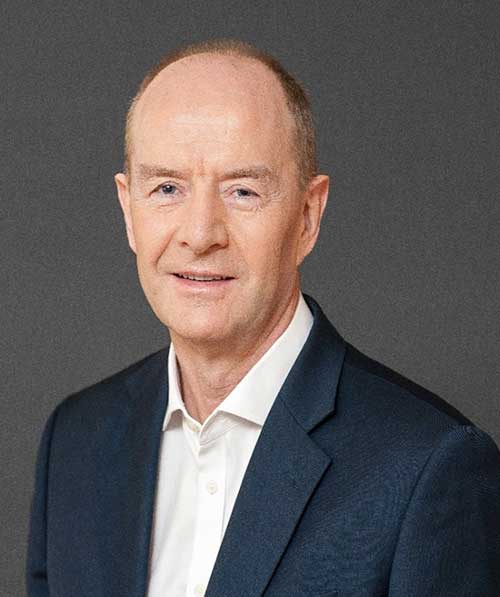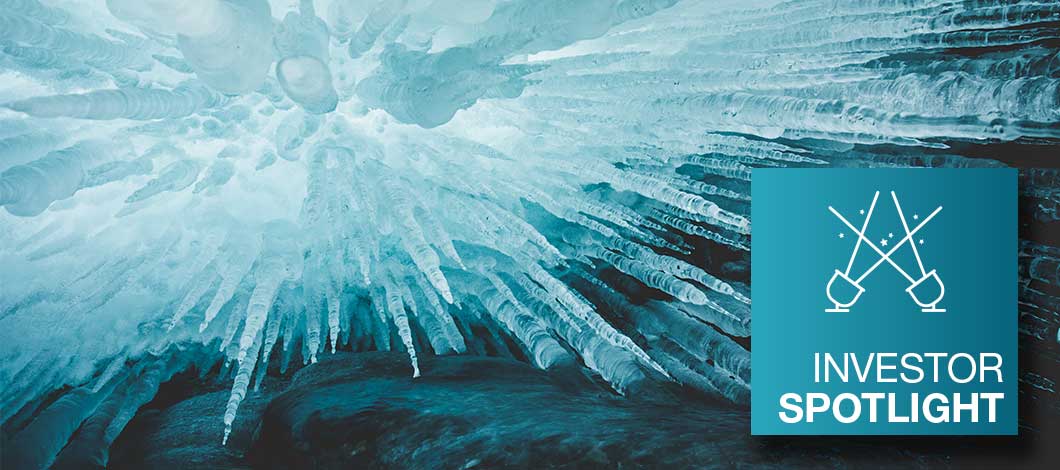Less than a decade after the removal of capital controls that banned pension funds from investing assets overseas, Iceland is now achieving international recognition for the strength and health of its retirement savings system. The country has claimed the top spot in the Mercer CFA Institute Global Pension Index for the past two consecutive years, ahead of the Netherlands and Denmark.
 Sigurbjörn Sigurbjörnsson
Sigurbjörn Sigurbjörnsson Managing Director, SL Pension Fund
In order to discuss the evolution, Investor Spotlight sat down with two senior figures from SL Pension Fund: Sigurbjörn Sigurbjörnsson (Managing Director) and Jon Otti Jonsson (Chief Investment Officer).
The Icelandic economy was one of the most high-profile victims of the 2008 global financial crisis. All three of the country’s major privately owned banks defaulted before a stabilisation package was implemented, including an IMF bailout and strict capital controls to protect the króna. The country’s pension funds, some of whom had lost around a third of their value amid the volatility, were barred from making further international investments and encouraged to shift assets onshore – a constraint that stayed in place until 2014. The economy underwent a severe depression, with a 10% decline in GDP between Q3 2007 and Q3 2010.
Today, the country’s ISK 7 billion (around USD 50 billion) pension system is viewed as being one of the healthiest in the world. Yet, with pension fund assets now twice the size of GDP and a relatively small domestic market, these pension funds face a very distinctive set of challenges and opportunities. One key theme is international investing, which has been on the rise since restrictions were lifted but is still legally capped. Pension funds have been permitted to invest 50% of assets overseas, but in practice the figure is around 35% due to the risk of market fluctuations; this cap is now being raised by 1% per year until it reaches 65%.
SL Pension Fund is somewhat ahead of the curve on international diversification, with around 41% of assets invested overseas. It also boasts the strongest long-term return of all Iceland’s pension funds, with a real return of 5% per annum over the past 20 years — helped in part by resilience shown during the financial crisis. Since 2014, the team has also been focused on building up exposure to private markets, taking advantage of their strong funding ratio and high tolerance for illiquidity risk.
Q: Briefly, how healthy is the pension system at this point?
We have a very high savings ratio: the assets in the pension system are now around double the size of Iceland’s GDP. The system has recovered well since 2008 and assets have increased since then really well. Our own fund didn’t actually suffer too badly in 2008: we lost perhaps 8-9% of assets, whereas some of the pension funds lost 30-35%. It’s probably also worth mentioning that we never had to reduce payments to members and this year we were able to increase payments.
Q: Can you walk us through your path towards international investing at SL Pension Fund?
We’ve only been investing internationally—outside of Iceland—since 1995. Interestingly we were actually investing in foreign equities before we began to invest in stocks in Iceland: we were only allowed to invest in domestic equities from 1996 onwards. Those who entered international equities most aggressively benefited a great deal at first, particularly in 1999, but then faced the most damage when the dot com bubble burst. That crash led some sceptics to argue that a significant shift towards international exposure had been a mistake, particularly when anything you invest in is essentially competing with local interest rates of around 6-8%. Yet I felt that we should build more international exposure, especially when considering the low liquidity of Iceland’s own equity market.
By the time of the global financial crisis, we had around 20-25% of the portfolio in international investments. Then, of course, came the capital controls which were in place until 2014. This was a difficult time, to be honest. After 2009, if we wanted to make any new commitments internationally, we had to use money that was already invested abroad. Helpfully, the domestic equity investments did perform quite nicely – we were buying at attractive valuations. The large private equity fund that was established in Iceland and was financed by the pension funds to support and re-establish local companies also delivered fantastic performance. That fund was active after the global financial crisis, and again in 2010-11 for example it supported Iceland Air after the volcano eruption that affected the firm, but has now wound down. Separately, we also supported Iceland Air again during the pandemic.
Overall Iceland’s pension funds now have about 35% of assets invested internationally, but the figure for us is about 41% – around the top of the scale. The official limit is 50%, but currencies and markets can change quickly so we need to keep a buffer in place that would ensure we don’t breach the 50% figure. Going forwards we will see 1% per year added to that maximum level, so that in 15 years’ time it would be 65%.
Since the capital controls were lifted in 2014, our main focus has been building up private market investments abroad – mainly in private equity. As of now, 8% of the entire fund is in international private equity (single manager funds and fund-of-funds); we started investing in that in 2000. From 2015-16 onwards we’ve also started to invest in other private markets abroad: about 2% of the fund is now in international infrastructure and private debt, with real estate around 0.5%. We’ve also added a little to our listed equity portfolio abroad in this period, but not much
Q: Why has there been such a strong focus on private market asset classes internationally?
We are very comfortable with illiquidity: we do have a young demographic and don’t need the capital yet. We like the lower volatility, with valuations four times per year, and we like the outperformance versus public markets – we’ve had some excellent results ourselves. In our experience, the transparency is in many ways actually higher: private companies can inform you of things at any time, whereas listed companies have restrictions on what they can tell you and when.
We’re lucky to be working with a lot of interesting firms on the private markets side now. It’s important to be selective and find really good managers: that’s not always easy to do, and we don’t always get it right, but on average our selection has been good. This year, our focus has been on private debt – where we want to maintain a certain level of commitment.
Q: To what extent do you still face pressure to invest to benefit the local economy?
We don’t really experience any pressure on this subject. However, over the past few months and years we do see some people that would want to see the pension funds investing in domestic infrastructure. There is no pressure here but there have been questions, meetings and discussions. We would like to invest in infrastructure here, but the political environment is not straightforward. Pension funds are private capital and we do need a decent return: that is always the main goal. Political parties have talked about some interesting project but they have different opinions on what should be done when private capital comes into public projects.
Q: What are your biggest challenges and priorities right now?
Inflation is a key priority and challenge right now. Even though we like high interest rates on the investment side they’re not good for the wheels of the economy. On the fixed income side, we hold quite a big portion of assets in domestic fixed rate bonds, so over the past couple of years we’ve focused on inflation-linked bonds. [Note: around 40% of Icelandic pension funds’ assets are in domestic credit and bonds]. In domestic equities, we’ve focused on companies that are able to pass inflation to the consumer.
Climate change is another major subject for us now. Over the past two-to-three years we’ve become more active in green bonds and in private market strategies (private equity and infrastructure) that have an environmental/ESG focus.
bfinance would like to thank Sigurbjörnsson, Jonsson and the team at SL Pension Fund for sharing insights.
Important Notices
This commentary is for institutional investors classified as Professional Clients as per FCA handbook rules COBS 3.5R. It does not constitute investment research, a financial promotion or a recommendation of any instrument, strategy or provider. The accuracy of information obtained from third parties has not been independently verified. Opinions not guarantees: the findings and opinions expressed herein are the intellectual property of bfinance and are subject to change; they are not intended to convey any guarantees as to the future performance of the investment products, asset classes, or capital markets discussed. The value of investments can go down as well as up.


 English (Global)
English (Global)  Français (France)
Français (France)  Deutsch (DACH)
Deutsch (DACH)  Italiano (Italia)
Italiano (Italia)  Dutch (Nederlands)
Dutch (Nederlands)  English (Canada)
English (Canada)  French (Canada)
French (Canada) 

